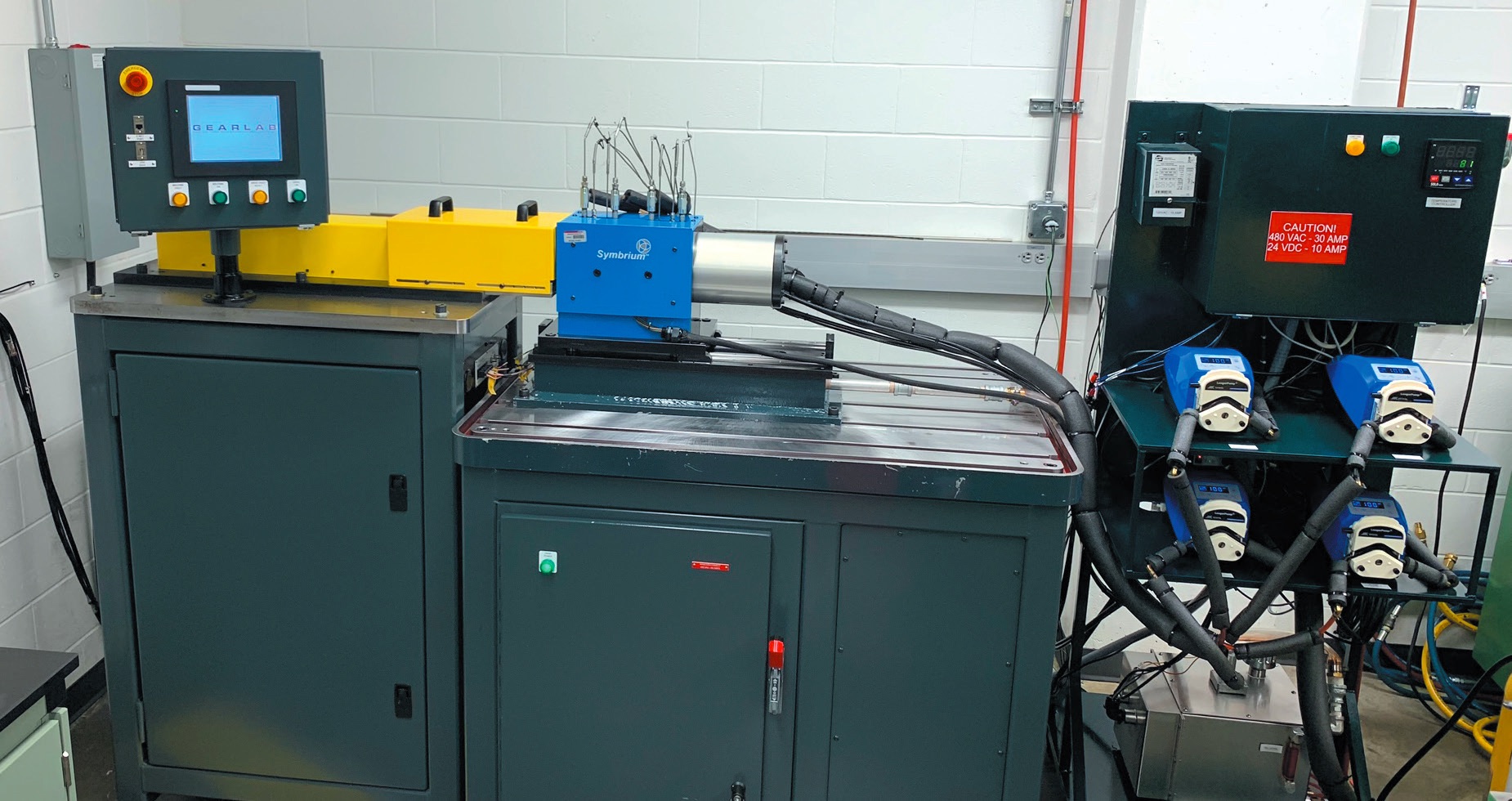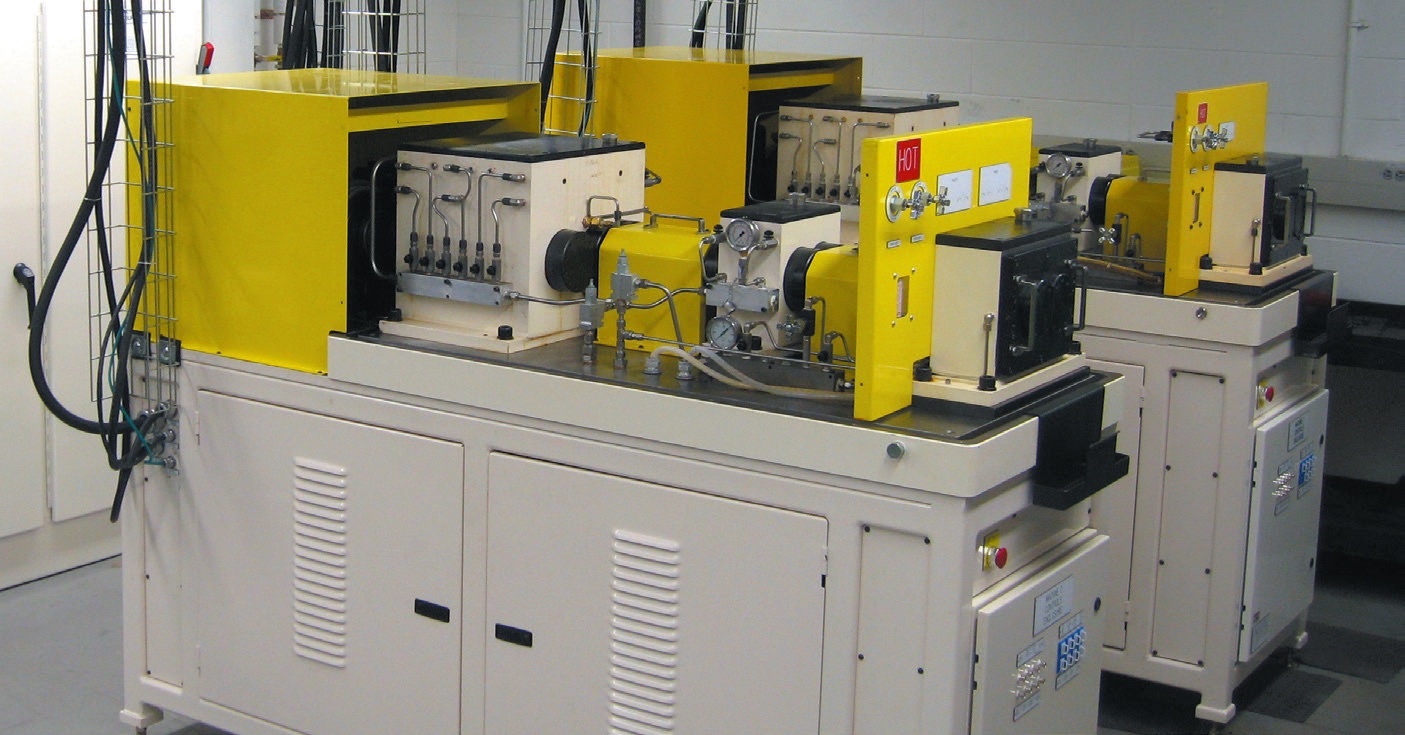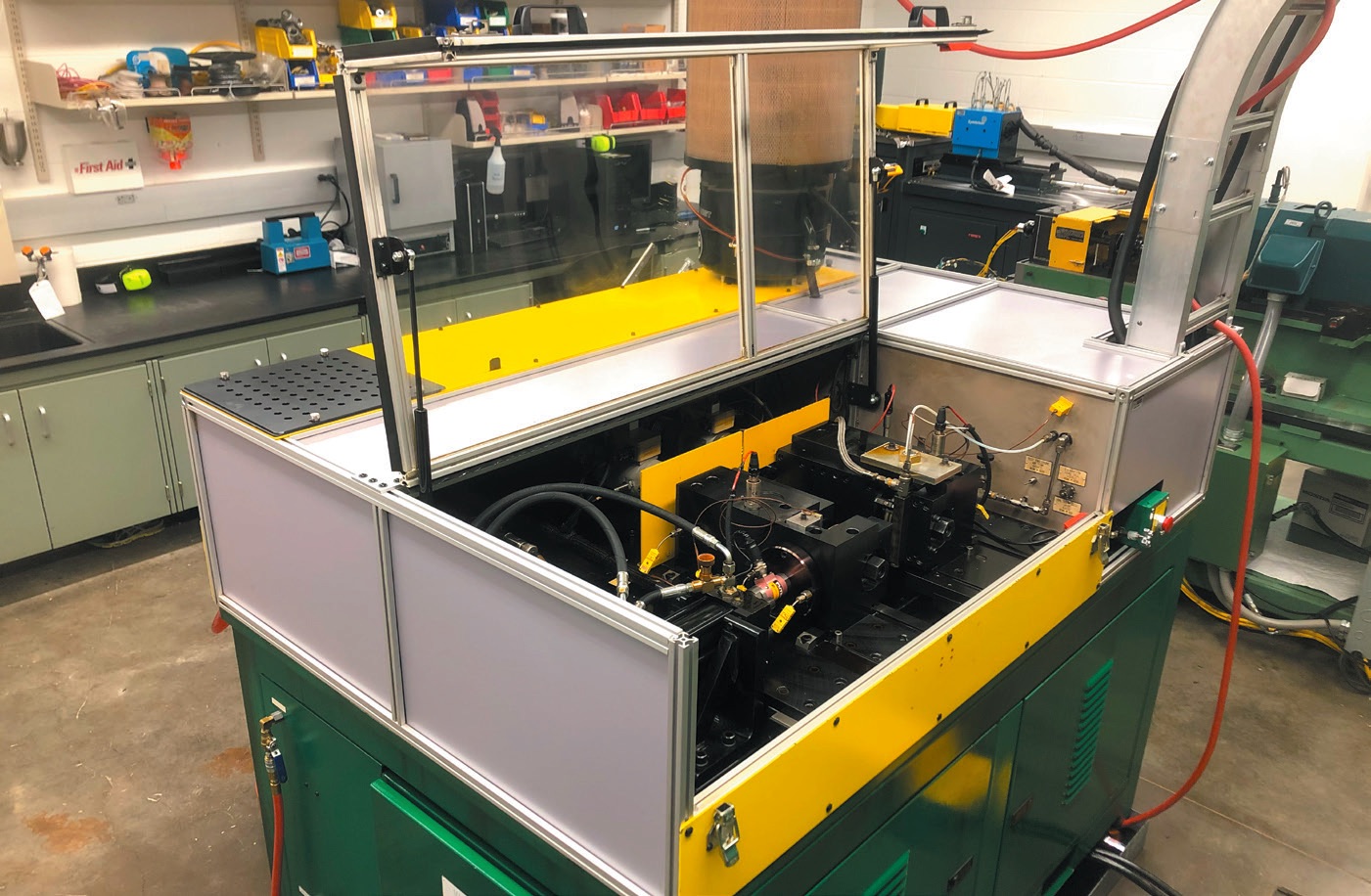TLT: What role do universities fulfill in connecting research into gear systems and gear lubrication with relevance for industrial applications?
Kahraman: This question could be worded as whether the universities fulfill such a role in connecting research into gear systems and lubrication and industrial applications. The gap between industry and university researchers is a very real problem in the U.S. For an academic researcher to play such a role, he or she must be familiar with not only the state-of-the-art in fundamental, theoretical and experimental methods but also familiar with the essential features, challenges and needs of different industrial applications. An academic researcher often might be strong in fundamentals while lacking badly in experience in and exposure to industrial applications. As such, many academic studies might not be applicable to industry at all. We hear that sentiment from our industrial partners all the time. For instance, we can locate in literature hundreds of elastohydrodynamic lubrication models of various levels of sophistication, but perhaps only a few of those can handle a helical or hypoid gear contact, if any.
Our research group tries hard to take full advantage of our industrial consortium membership to gain an understanding of the perennial gearbox lubrication issues so that our research can be both fundamental and applicable to the needs of the industry.
TLT: How do you conduct effective university collaborations with industry and government partners?
Kahraman: As a research group at a U.S. university, we do need to generate all funds required to perform research. Research memory and continuity requires us to retain full-time research staff as well as graduate and undergraduate students. We also must possess general research instrumentation, setups and machines to be used for research projects. All these require a stable stream of research funds for us to maintain a sustainable research program. Unlike many of our European or Far East counterparts, we do not have a well-structured baseline funding from federal and state governments or the university. This leaves us with two viable avenues to generate revenues to support our research activities. One has been our research consortium that we have nurtured and built on for more than four decades now. We do have nearly 80 member companies of our consortium globally from diverse industries (automotive, aerospace, off-highway and recreational vehicle, machine tool, clean energy, oil and gas), which provide that stable baseline funding for our group. This not only allows us to support our infrastructure and full-time research staff but also provides opportunities for our students to perform industry-focused fundamental research.
As our consortium is precompetitive (i.e., all members have access to the same software tools, research findings and experimental data generated by the consortium activity), many of our consortium members with specific and competitive needs work with us on individually funded research projects. This provides the second half of our funding mechanisms. The same is true for our government agency partners.
With these collaboration channels in place, we can perform research with the uninterrupted focus on (1.) whether the work will possess the originality and scientific rigor required for graduate theses and external publications and (2.) whether it is equipped with qualities to address the issues of those particular applications of the sponsor. While these two appear to contradict each other, we frequently see that a university research project can be fundamental while still addressing practical industrial problems.
In working with industry, it is critical to view the project as a joint endeavor with our industrial partners and maintain close interactions and collaboration throughout the project. This way, we learn immensely about the problems in hand, including certain aspects such as cost that are often not visible to academic researchers. This also ensures that the focus of the research is maintained on the intended industrial application, and the project outcome meets to the needs of the sponsor.
TLT: How do you balance academic concerns of independent research and education with the needs of consortium members?
Kahraman: In fact, our consortium provides an environment that is more suitable for independent scientific research. Especially in the field of tribology, individual projects with companies become specific to the applications and needs of the sponsor. In these individual company projects, tools have to be customized for their lubricant rheology, manufacturing processes, gear types and operating conditions. The same specificity also applies to the experimental research of this kind. While we can still have graduate students involved in such projects and have them write theses with many relevant parameters normalized, it often becomes undesirable to publish such work. With consortium projects, on the other hand, we must develop research tools and data that are general enough to apply to a wide range of applications of member companies. As such, these studies become more general, fundamental and publishable. Consortium projects also are very good to support doctorate students, as it is becoming increasingly challenging to receive three or four year-long grants from individual companies.
TLT: What are future research areas in the field of gears and gear lubrication?
Kahraman: The future in power transmission and gearing is about high-speed applications. As the automotive industry is moving toward electrification, the power generation and transmission systems will change drastically. For a gear pair or a rolling element bearing operating at very large speeds, lubrication methods, lubricant type and additives, gear accuracy, contact surface quality, and lubrication regimes will all be different than a conventional application (
see Figures 1-3). This will not only present challenges on how to keep power losses under control but also bring in failure modes such as scuffing to the forefront for automotive applications. For university researchers, this means that we need to move swiftly toward theoretical tools and experimental capabilities suitable for such applications.
 Figure 1. A high-speed rolling element bearing power loss measurement setup with combined radial and axial loading.
Figure 1. A high-speed rolling element bearing power loss measurement setup with combined radial and axial loading.
 Figure 2. High-speed gear contact fatigue and scuffing test machines.
Figure 2. High-speed gear contact fatigue and scuffing test machines.
 Figure 3. A high-speed and high-temperature two-disc tribometer capable of rolling velocities up to 50 m/s and sliding ratios up to 100%.
Figure 3. A high-speed and high-temperature two-disc tribometer capable of rolling velocities up to 50 m/s and sliding ratios up to 100%.
At such speeds where dynamic effects cannot be ignored, tribodynamic thermal models will likely become the norm. In other words, the mutual coupling amongst the core competencies such as manufacturing, tribology, dynamics and material science will become more critical, forcing academicians to take on multidisciplinary research topics. This obviously increases the level of complexity of a model, often with a heavy burden of computational demand. If a transient tribodynamic model of a helical gear pair could take several days to simulate a particular application, it has limited practical value to a gear engineer who would like to evaluate many candidate concepts with various surface roughness conditions, different lubricants and wide ranges of operating conditions. If we are not cognizant of this, we will only add to the gap between industry and academia.
There are several other potential challenges to surface, based on the recent trends we see in industry. For instance, there is a significant push toward ultralow viscosity lubricants in an attempt to reduce load-independent power losses of the products. With this, you must deal with ultra-thin fluid films in gear contact combined with excessive sliding and high-contact pressures. These conditions are likely to push some of the limits of conventional elastohydrodynamic lubrication modeling, such that newer approaches such as molecular tribology might become more relevant to gear applications. Also, critical here is the need to characterize the non-Newtonian rheology of future fluids under such sliding and pressure conditions so that they can be represented in models accurately.
Future systems also will require us to move from component-level thinking to a more system-level one. In a powertrain of an electric vehicle, for instance, it will not often be possible to treat power losses of components such as gears, bearings and seals independently. We will be forced to bring in customized models of contacts of these different components together and maintain their complex interactions to predict system-level performance and reliability outcome.
These new trends obviously do not mean that we should abandon our current research focus all together. Many of the perennial industrial problems of today will not go away as applications evolve in the future (
see Figure 4). We are still in need of physics-based models to predict gear wear, gear micropitting and spalling and gear scuffing. We must retain our focus on these topics while expanding our capabilities to new applications as well.
 Figure 4. Gear contact fatigue test machines to perform automotive-intend pitting and scuffing tests.
TLT: What do you think is the main contribution of your research group in terms of its impact on industry?
Figure 4. Gear contact fatigue test machines to perform automotive-intend pitting and scuffing tests.
TLT: What do you think is the main contribution of your research group in terms of its impact on industry?
Kahraman: As a university research group focusing on power transmission systems and gears, our mission is to generate new, original knowledge. We would like to think that our research impacted the engineering community over the years with such knowledge that this should be our main contribution. Many companies use our tools to design, optimize and simulate their systems. They use our data to validate their own models. While this seems obvious, if we look at our activity from a certain distance, it becomes clear that the real impact still comes from our education mission. We are able to expose students to real-life problems in various aspects of gears, including gear tribology, and train them specifically in those fields with valuable practical industrial insight. We have more than 200 alumni (masters and doctorate graduates) in our lab working now in power transmission and gearing-related industrial jobs or doing good research in academia. The most significant long-lasting impact of our group has to be our ability to train engineers and researchers for companies.
You can reach Ahmet Kahraman at kahraman.1@osu.edu.